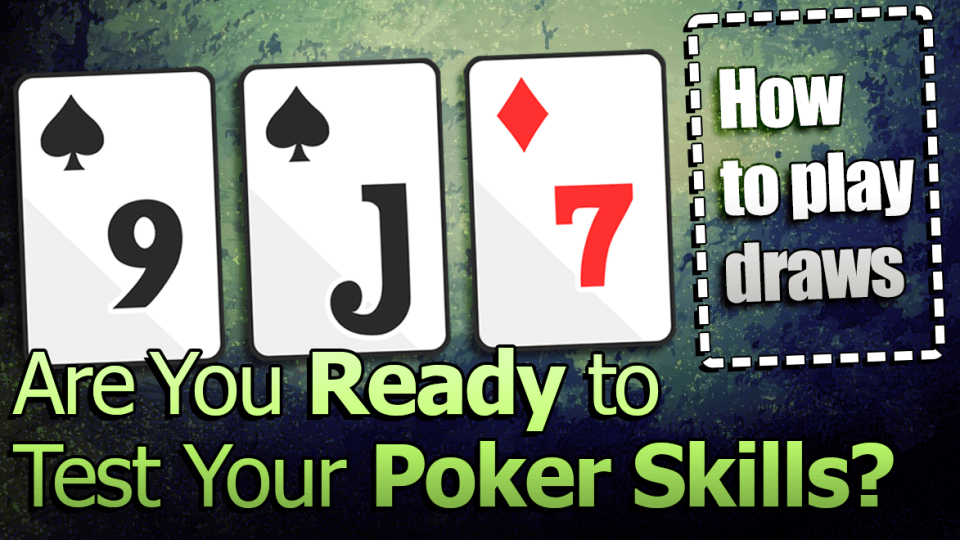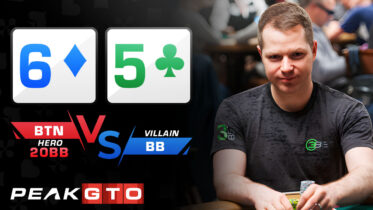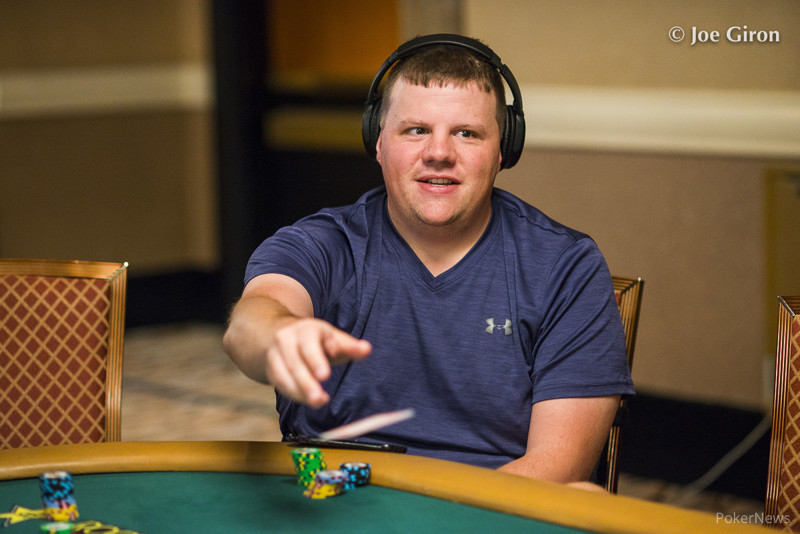When you flop the absolute nuts, it’s easy to feel like you can relax and expect a hefty pot, but if you happen to have timid opponents at the poker table, it may be hard getting full value from a flopped flush. In this cash game strategy article, Evan Jarvis breaks down a hand he played in a $2/$5 cash game where he flopped the absolute world. Take this hand street by street, and consider how you would play this hand in each spot.
Scenario: You are 9-handed playing in a $2/$5 cash game with a stack of $580. Two players, both the UTG+2 player and the hijack, limp and it folds to you in the big blind holding K♣-Q♣.
The Game: $2/$5 Cash Game
Effective Stack: 117 Big Blinds
Your Hand: K♣-Q♣
Preflop Analysis
There is really no reason to think either player is doing anything tricky to trap, incentivizing you to raise. Your hand plays extremely well post-flop: you can flop top pair, nut-straight draws, and flush draws. You have a fine spot to build the pot, out of position you want to increase your bet size as you lack positional advantage post-flop. Betting $35 as opposed to a size like $20 likely makes the hand heads-up, and adds additional value to the pot.
Action: You bet $35 and only the hijack calls. The flop is A♣-7♣-4♣.
Flopping The Nut Flush
The Pot: $77
The Board: A♣-7♣-4♣
Effective Stack: 110 Big Blinds Effective
Flop Analysis
Some poker players may be tempted to check in an attempt to slowplay their flopped nut flush and trap their opponent, but if your opponent bets and you call it looks extremely suspect.
It is important to consider what your opponent may have that you can get value from. You should target any paired aces he may be holding, but how do you extract the most value possible?
After calling your bet preflop, it is highly likely your opponent won’t be willing to give up if you execute a small bet, especially if they have paired an ace. Bet $20 to add some value to the pot, and hopefully set yourself up for a bigger bet on the turn.
Action: You bet $20 and your opponent calls. The turn is the A♠.

Continuing To Pursue Value On The Turn
The Pot: $117
The Board: A♣-7♣-4♣-A♠
Effective Stack: 106 Big Blinds Effective
Turn Strategy
Even though the full house has come in, you shouldn’t be too worried about it and should continue to pursue value. While you want to bet on the bigger side, potting or over-potting is not the correct sizing to get value. If your opponent has nitty tendencies, they may even fold an ace!
Considering what sizing you should use to extract additional value from your opponent, $80 is a comfortable size. If your opponent calls the $80 bet, there will be $280 in the pot and their stack-to-pot ratio will allow you to strategically shove on them. If they call with an ace, they will likely call any bet on the river, setting you up to get stackin’!
Although the preferred play would be to bet $80 and add value to the pot, your opponent’s play on the flop does not suggest they have much strength, making checking a feasible option as well. If you bet large they may very well fold, but by checking you could see them bet and add money to the pot even if they don’t have an ace.
Action: You decide to check and your opponent bets $40.
Considering A Check-Raise
Like the previous spot, if you want to build the pot and grow it to a big enough size to stack your opponent, check-raising is the best play. Although check-raising to $120 will definitely accomplish this, your opponent needs a good enough hand to call with. The objective of checking the turn was to induce your opponent into betting when they potentially would have folded to aggression, maintain the same strategy on this street by calling in hopes of squeezing as much equity out of your opponent as you can on the river.
Action: You call, and the river is the 10♦. You check, and your opponent again bets $40.
Getting As Much Value As You Can On The River
The Pot: $237
The Board: A♣-7♣-4♣-A♠-10♦
Effective Stack: 98 Big Blinds Effective
River Analysis
Even though it is hard for your opponent to have that strong of a hand, you have squeezed as much value out of them as you can by slow playing. Make the check-raise in case you can get some additional value from an ace, do not go all-in as not only will it not get called by worse hands, but it is disastrous when they happen to have spiked a full house on the river holding A-10.
Conclusion
You check-raise your opponent $120 and they quickly fold. While you may feel disappointed that you couldn’t get it all-in by the river, realistically you got as much value as you possibly could from your opponent. Take the lessons from this poker hand breakdown and apply them to your own games. If you enjoyed this poker hand analysis, be sure to check out my previous cash game strategy article.




